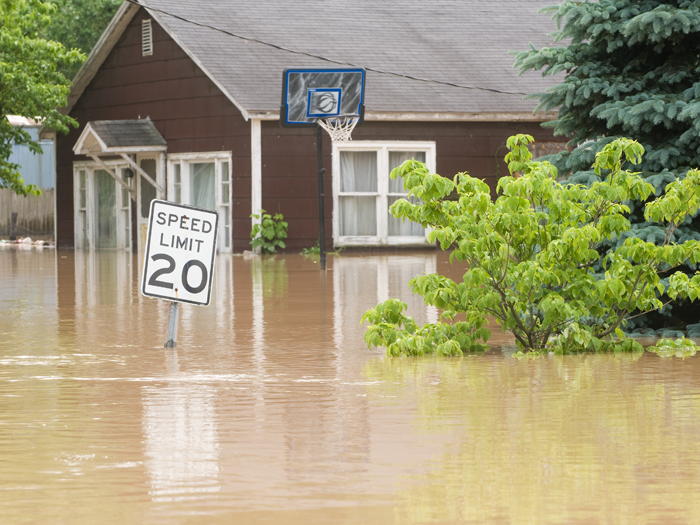U.S. Flooding Losses Could See a 26% Uptick by 2050. You Can Thank Climate Change

Last year, the insurance industry saw $105 billion in losses due to extreme weather events.
Though weather events so uncommon they can only be called historic — think Texas’ winter storm Uri and the Midwest derechos — certainly contributed to those losses, one, more common, type of weather event stood above the others: flood risk, largely caused by Hurricane Ida.
Insured flood-related losses totaled $13 billion in Europe and uninsured losses were greater than $40 billion. In the U.S., Ida brought on between $30-32 billion in estimated insured damages, with flooding costs accounting for a large piece of the pie, per reports from Swiss Re.
And that’s a number that isn’t going down anytime soon. Global climate change is causing increasingly frequent and strong storms — and that means more losses.
Take flood insurance for instance. A January 2021 study published in the journal Nature Climate Change uses data from flood insurance claims, building records and the U.S. census, among other sources, to predict how global climate change will affect flooding in America.
The Study by the Numbers
- On average, flood losses currently cost the U.S. $32.1 billion annually.
- The study predicts flood losses in the U.S. will increase to $40.6 billion by 2050, an increase of 26.4%.
- Some areas will see higher increases than others. Jackson, Mississippi is predicted to see losses increase by 49% while Cook County, Minnesota will only see a 7.4% increase.
- The study authors built an interactive map, where people can see how much losses will increase in their counties.
- The study choose the period between 2020-2050 because that is the term of a 30-year mortgage.
Are These Predictions Too Optimistic?
Though these increases are already sobering, the reality is flood losses in 2050 may be even higher.
The University of Bristol researchers behind the study went in with the assumption that countries across the world will come together and reduce planet-warming emissions roughly in line with the targets agreed upon at the recent COP26 climate summit, the Washington Post reports.
The agreement strives to reduce global greenhouse gas emissions by 45% before 2030 and to net-zero by 2050, with the goal of limiting warming to about 1.5 degrees Celsius higher than it was in pre-industrial times.
Under current policies, the globe is on track to warm by 3 degrees Celsius before 2100, according to reporting from the New York Times.
Increased flooding in the U.S. will disproportionately affect people of color. Currently, poor white communities in America experience the most profound flood risk, per the Washington Post report. But Black communities are likely to see their flooding costs increase twice as quickly in the future because the southeastern United States — where many Black Americans live — will experience more hurricanes, the study found.
The Future of Flood Risk
Increased losses from flooding over the next 30 years are likely to further limit capacity in an already tough commercial property insurance market.
Experts are predicting property insurance rates will double by 2040. A report from Swiss Re predicts that global P&C premiums will more than double from $1.8 trillion in 2020 to $4.3 trillion in 2040.
As flooding increases the risks of property damage, some in the insurance industry are looking for ways to better model flood risk. Typically, flood risk is determined by historical data, which doesn’t take into account the effects of global climate change.
Startups like the Philadelphia-based Dorothy are using machine learning, artificial intelligence and satellite imagery to predict ever-changing flood risk. And new maps released by nonprofits like the First Street Foundation are taking into consideration heavy precipitation, riverine flooding, coastal storms and sea level rise.
As these new tools come to market, underwriters will be able to better price flood risks. But as the effects of global warming continue to evolve the question remains: will we be able to predict flood risk in the face of changing climate conditions? &










